Iran (IMNA) - The tragedy reenacts the death of Hussein and his male children and companions in a brutal massacre on the plain of Karbala, (about 60 miles south of modern day Baghdad), in the year 680 AD.
The slaughter at Karbala came to be considered by the Shiites as the ultimate example of sacrifice, the pinnacle of human suffering. The month of Muharram became the month of mourning, when Shiites all over the world commemorate Imam Hussein's sacrifice.
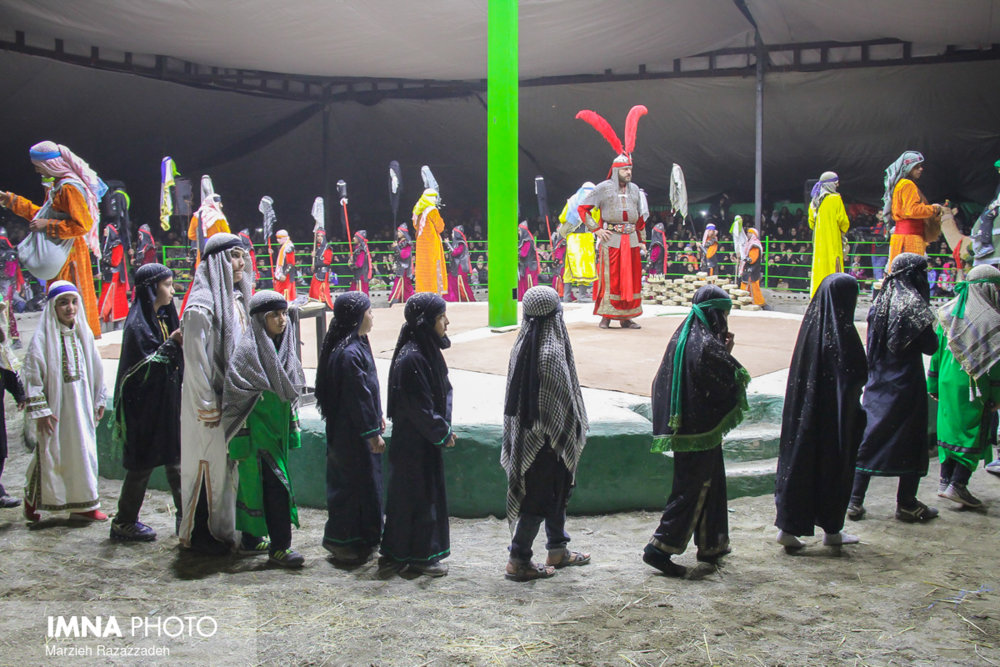
The main drama occurs on a raised, curtainless platform in the center of a building or courtyard. Subplots and battles take place in a sand-covered, circular band of space around the stage. Actors frequently jump off the stage into this space to mark the passage of time or a journey, and scene changes are indicated when a performer circles the platform. If there are auxiliary stages that extend into the audience, they serve as settings for scenes of special significance. Corridors running from the stage through the seating area serve as passageways for troops and animals. The starkness of the stage represents the barrenness of the desert plain at Karbala.
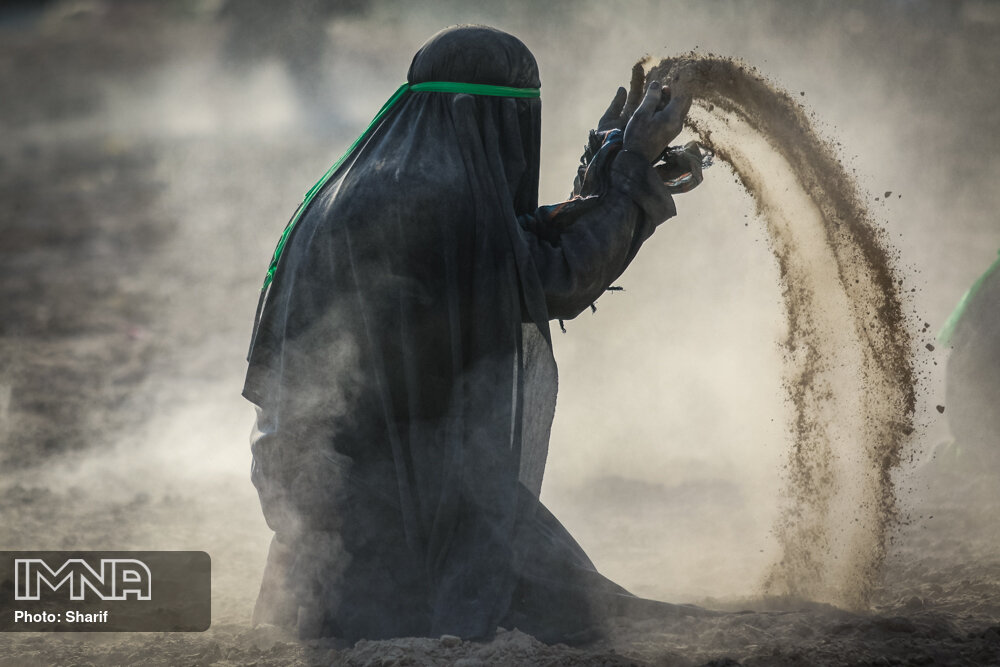
In the ta'ziyeh, protagonists sing their parts and antagonists recite theirs. Dressed in red to symbolize blood and oppression, the villains often purposely overact by shrieking their lines in harsh unpleasant voices. By contrast, the heroes sing their parts in the classical Persian modes and clothe themselves in the green color of the garden paradise. Traditionally, actors were chosen for their physical attributes. Protagonists playing Imam Hussein (PBHU) for example, were expected to be tall with broad shoulders and fine beards. This could and did cause casting problems, however, since a fine singing voice was necessary to complement the pleasing physique of a hero. Young boys with good vocal skills who began by playing girl's roles in the ta'ziyeh, often assumed the parts of young men after their voices changed.
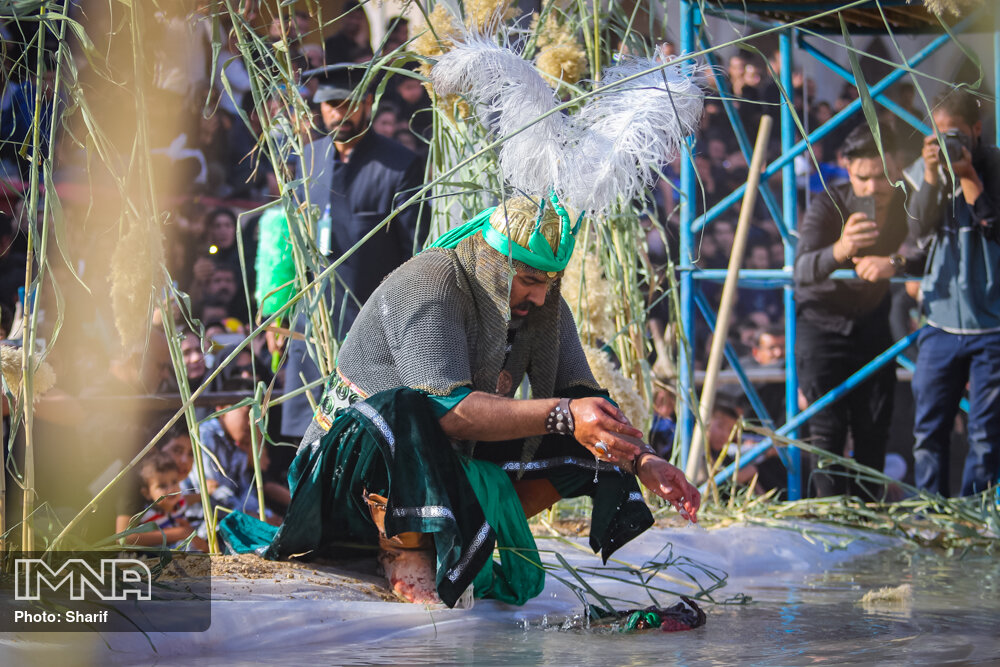
Singers are accompanied by a variety of drums, trumpets, flutes, and cymbals. An orchestra can be quite substantial or consist of just a few musicians depending on the financial resources or theatrical experience of the troupe. Drum music announces that the drama is about to begin. It may be repeated several times, particularly if the audience needs more time to assemble. Once the spectators have gathered, a fanfare is played while the actors file into the performance area in procession. This is followed by a short overture which sets the mood for the play about to be performed. The drama opens with the pish-khani, or prologue, which presents a summary of the plot sung by the chorus.
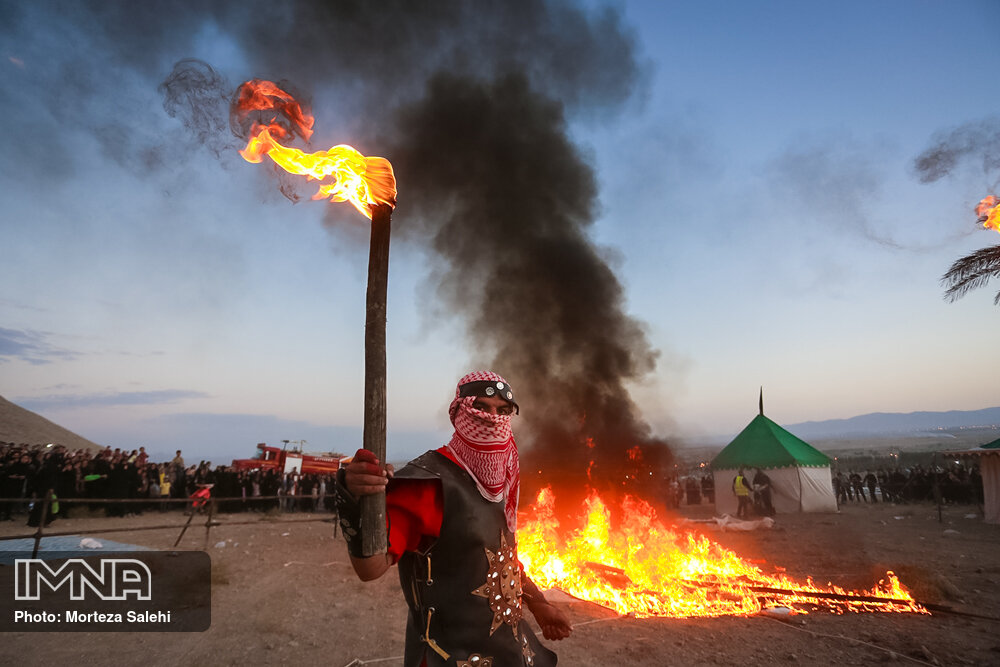
During the pish-khani, everybody sings, including the antagonists. Usually the chorus gathers in the main performance space, but it occasionally divides into two groups on either side of this area and sings alternate lines in antiphony ("call and response"). Throughout the play, programmatic instrumental music alternates with singing. These musical intervals set a mood or advance the action by indicating the passage of time. They also serve to cue a singer by establishing the particular dastgah, or mode, in which he is about to perform. He will then sing the scene a Capella.
According to many scholars of music, it is thanks to the ta'ziyeh that much of the classical Persian repertoire has survived.
asiasociety

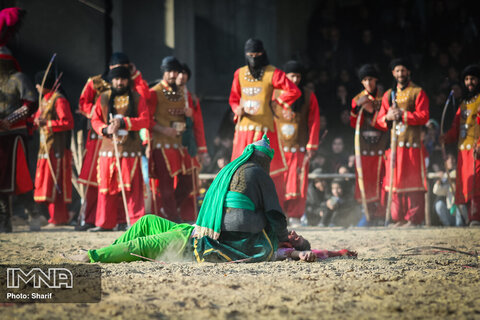
Your Comment